|
Wild Life Tours
Rajaji
National Park
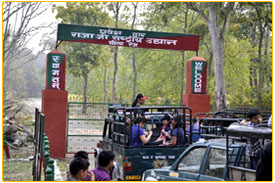 Duration
: 2 Night / 3 Days Duration
: 2 Night / 3 Days
Location : Located in
the Indian state of Uttarakhand.
220 Km Distance from Delhi
Best
Time : 15th of
November and 30th of May
Main
Attractions : Tiger,
Elephants, Rafting, Photography,
Wildlife
Rajaji National Park is a
wildlife sanctuary positioned by
the side of the hills and
foothills of Shiwalik ranges in
the Himalayas of Uttaranchal,
India. It merges three
sanctuaries, namely Chilla,
Motichur and Rajaji and
constitutes its wide niche.
Spread across an area of
820sq.km, Rajaji National Park
covers Pauri Garwal, Dehradun
and Saharanpur districts of
Uttarakhand.
Rajaji National Park is
named after the great C.
Rajagopalachari who was
popularly known as Rajaji. He
served as a prominent leader of
the Freedom Struggle. This great
freedom fighter was also the
second and last Governor-General
of independent India.
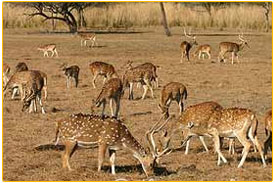 Tourist
Season at Rajaji National Park
starts from 15th November and
ends by the 15th of June.
Spending your vacations here
would be great as the facilities
available here are tailor made
for every kind of traveler.
Several hotels and lodges are
there for your stay. You can eat
out at the Chilla Tourist Lodge
that offers best of Dining
facilities. Other facilities
near the park include Banks at
Dehradun and Medical facilities
available at Haridwar and
Dehradun. Tourist
Season at Rajaji National Park
starts from 15th November and
ends by the 15th of June.
Spending your vacations here
would be great as the facilities
available here are tailor made
for every kind of traveler.
Several hotels and lodges are
there for your stay. You can eat
out at the Chilla Tourist Lodge
that offers best of Dining
facilities. Other facilities
near the park include Banks at
Dehradun and Medical facilities
available at Haridwar and
Dehradun.
Rajaji National Park is popular
for its big-name wild animal
species like Asian Elephant,
Tiger, Leopard, Jungle Cat,
Indian Hare, Sloth Bear, Goral,
Indian langur, Civets, Indian
Porcupine, Monitor lizard,
Python, Himalayan yellow
throated marten, Himalayan
Black Bear, Nilgai, King Cobra,
Jackal Barking Deer, Sambhar,
Wild boar, Common Krait, Indian
Cobra and Rhesus macaque.
This National Park is also known
for housing beautiful avian
species that counts over three
hundred in number. This wide
diversity in the species is due
to the open grassland location
of the Rajaji Park. Some of the
birds worth watching here
include White-naped Woodpecker,
Great Hornbill, Black-bellied
Tern, Pallas's Fish Eagle,
Greater Scaup, Great Pied
Hornbill, Himalayan Pied
Kingfisher, fire tailed sunbird,
Northern Goshawk, Yellow-billed
Blue Magpie, Scaly Thrush,
Snowy-browed Flycatcher,
Rusty-flanked Tree-creeper,
Pale-footed Bush Warbler,
Black-necked Stork, Tytler's
Leaf Warbler, Reed Bunting, and
Green Avadavat. Migratory birds
from far west add to the number
of the already found species.
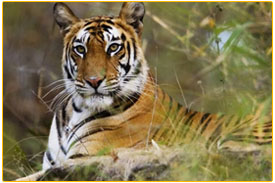 The
flora or the vegetation of the
Rajaji Park stands spectacular
and donate towards the eco-sysytem
of the park. Several of the
great plant species are found
here. Some species to name are
Terminalia, Shorea, Mallotus,
Phoebe, Drypetes, Dalbergia,
Acacia, Adina, Bridelia,
Syzygium, and many more! The
flora or the vegetation of the
Rajaji Park stands spectacular
and donate towards the eco-sysytem
of the park. Several of the
great plant species are found
here. Some species to name are
Terminalia, Shorea, Mallotus,
Phoebe, Drypetes, Dalbergia,
Acacia, Adina, Bridelia,
Syzygium, and many more!
Thickly covered by the Sal
Forest, the main forest types of
Rajaji National Park include
Western Gangetic Moist, Northern
dry Deciduous and Khair-Sissoo
forests. Savannah Woodlands
cover the drier southern borders
of the park. It is also very
interesting to know that the
reason behind the fertile
landscapes of the reserve is the
flow of River Ganga through the
park. The river flow stretches
around 24 km and contributes
towards the greenery of the
park. Nature lovers will find
the captivating landscape and
wildlife of the Rajaji Park to
be tempting and irresistible.
Jim Corbett National Park
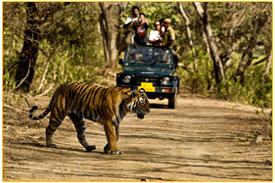 Day
01: Delhi - Jim Corbett National
Park Day
01: Delhi - Jim Corbett National
Park
Arrival at Delhi, met by our
representative and transfer to
Jim Corbett National Park(300
kms/7 hours). Jim Corbett
National Park-named after the
hunter and naturalist Jim
Corbett who played a key role in
its establishment-is the oldest
national park in India. The park
was established in 1936 as
Hailey National Park. Situated
in Nainital district of
Uttarakhand, the park acts as a
protected area for the
critically endangered Bengal
tiger of India, the secure
survival of which is the main
objective of Project Tiger, an
Indian wildlife protection
initiative. Dinner and overnight
stay at resort.
Day 02:
Jim Corbett - Nainital
In the morning go for a
safari inside the national
park,in the afternoon transfer
to Nainital(60 kms/2 hours),
Nainital is a town in the Indian
state of Uttarakhand and
headquarters of Nainital
district in the Kumaon foothills
of the outer Himalayas. Situated
at an altitude of 1,938 metres
(6,358 feet) above sea level,
Nainital is set in a valley
containing a pear-shaped lake,
approximately two miles in
circumference, and surrounded by
mountains, of which the highest
are Naina (2,615 m (8,579 ft))
on the north, Deopatha (2,438 m
(7,999 ft)) on the west, and
Ayarpatha (2,278 m (7,474 ft) on
the south, evening free for
leisure. Dinner and overnight
stay at Hotel.
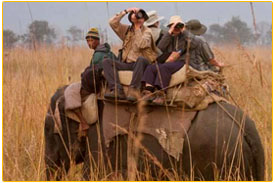 Day
03: Nainital Day
03: Nainital
After breakfast ,go out for
local sightseeing including
Naukuchiatal,Sataal and
Bhimtal.Dinner and overnight
stay at hotel.
Day 04:
Kasauni
After breakfast proceed for
Kausani enroute Ranikhet
visiting Chaubatia, Kalika and
Upat in Ranikhet. Kausani is the
place situated in the Bageshwar
district of the Uttarakhand
state of India. Kausani is the
Himalayan tourist destination,
which is 117 kms from Nainital,
the altitude of this place is
about 1890 mts. This place
Offers an excellent 350 km view
of the Himalayan peaks like
Trisul, Nanda Devi and
Panchchuli. There are very few
places in the Himalayas which
can compare with the beauty of
Kausani - A picturesque hill
station famous for its scenic
splendor and its spectacular 300
km-wide panoramic view of the
Himalayas. Kausani lies on the
atop the ridge admist dense Pine
trees overlooking Someshwar
valley on one side and Garur and
Baijnath Katyuri valley on the
other on
Almora-Bageshwar-Didihat
Highway. Mahatma Gandhi called
this place the 'Switzerland of
India', due to similarity in
landscape. Dinner and overnight
stay at Kausani.
Day 05:
Kausani
Day reserved for local
sightseeing and leisure activity
at Kausani. Dinner and overnight
stay at Kausani.
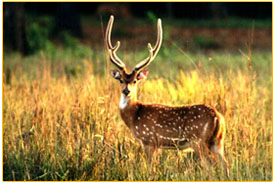 Day
06: Almora Day
06: Almora
After breakfast,proceed to
Almora. Almora is a cantonment
town in Almora district in the
state of Uttarakhand, India,
founded in 1568. Almora is
located at an altitude of 1638
meters (5,500 feet), on a ridge
at the southern edge of the
Kumaon Hills of the Himalaya
range. In the shape of a horse
saddle shaped hillock it is
surrounded by thick forests of
pine and fur trees, flowing
alongside the city are rivers of
Koshi(Kaushiki) and Suyal (salmale)
and to top it all are the snow
capped Himalayas in the
background. It is a town
bustling with activity, and has
a rich cultural heritage and
history. It is considered the
cultural heart of the Kumaon
region of Uttarakhand. Dinner
and overnight stay at Almora.
Day 07:
Mukteshwar
After breakfast, departure for
Mukteshwar(55 kms/90 minutes).
After arrival check in at the
hotel and later on in the day we
take you to local sightseeing to
some of the most beautiful spots
in Mukteshwar including
Methodist Church, Chauthi jaali
and Mukteshwar temple. Dinner
and overnight stay at hotel in
Mukteshwar.
Day 08:
Departure Mukteshwar
After breakfast, depart for
Delhi(360 kms/9 hours) |

